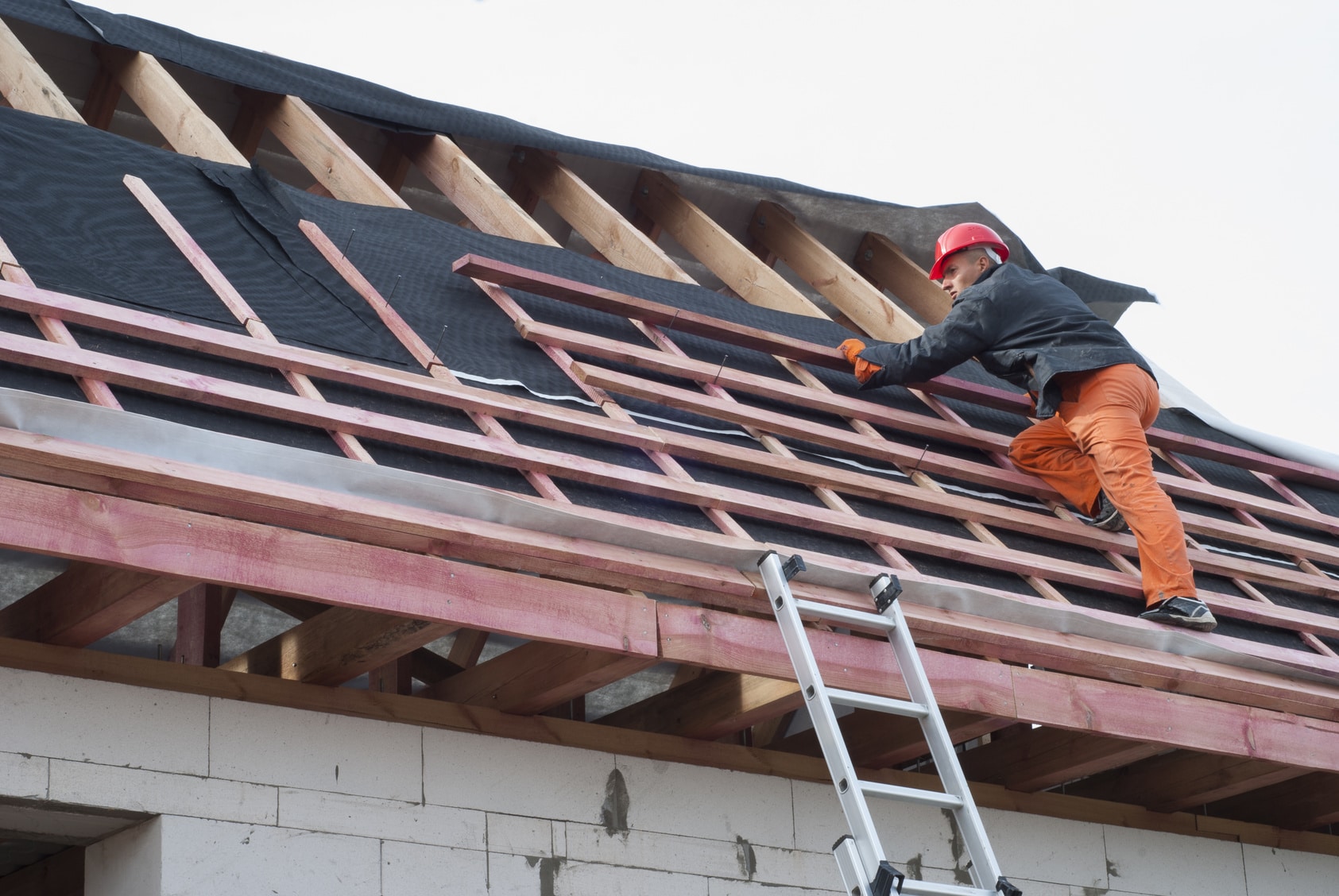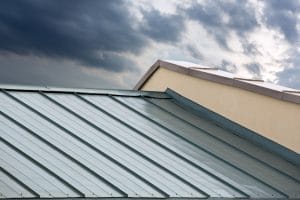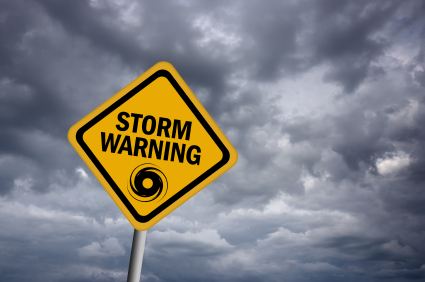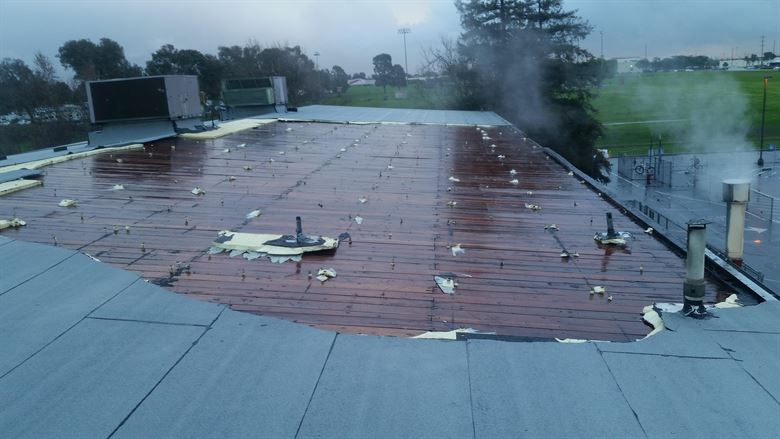10 Factors that Affect the Lifespan of your Roof
According to roofing professionals, it’s important to know about all the factors that can affect the lifespan of your roof so that you can ensure that your roof will be with you for a long time.
Let’s have a look at what determines how long you can make a roof last for your home:
1. Material
This is the most critical factor to consider as some roof materials are more durable than others. There are multiple material options for your roof, let’s take a look at which one will be the best for your home.
Asphalt shingle roofs are the most popular in the US as they are affordable and offer other benefits as well. They are made to last for about 30 years, but proper care can make them last for up to 50 years. However, they are not the most long-lasting option out there. They pale in comparison to metal and tile roofs.
Slate, tile, and concrete roofs are believed to be the most long-standing. They are made to last for about 50 years, but proper installation and care can make them last for over a hundred years.
Wood is said to be among the worst choices as wooden roofs only last for about 20 years. Plus, they are not suitable for all weather conditions.
Metal roofs, on the other hand, are quite durable. You can choose from a variety of metals including steel and aluminum. They can last for over 50 years and they offer other benefits as they are easy to maintain and highly energy efficient.
2. Weather Conditions
The roof provides a shield against outside elements including natural elements. However, extreme weather conditions can put a lot of pressure on the roof and can cause it to sustain damage over time, which may even reduce its lifespan.
This is why you should always keep the weather conditions in mind when choosing a roofing material. Everything from heavy downpours to hailstorms to strong winds can damage the roof.
Since there isn’t much you can do to control weather conditions, your best bet is to choose a reliable roofing company to ensure the roof is made up of the right material and installed correctly
3. Installation
It is essential to hire a competent and experienced roofing contractor to install the roof. Workmanship errors are among the most common causes of premature roof failures.
Installation defects can leadLead is a heavy metal that can be toxic to humans, especiall... More to premature replacements and early deterioration. Make sure you work with a contractor who understands the business and has expert laborers to get the job done.
Some contractors also offer warranties to show the faith they have in their work; however, these warranties typically only cover a few years.
4. Sun Exposure
Sun is good for your health, but it can be bad for the roof on your house. Excessive heat can accelerate wear and tear, especially if the ceiling is painted a dark color. This is because dark colors absorb more heat which can damage the roof.
UV radiationRadiation is the emission of energy in the form of waves or ... More can accelerate roof degradation and even leadLead is a heavy metal that can be toxic to humans, especiall... More to cracks. It’s best to choose materials that can handle sun rays well. Moreover, you may also apply coatings for improved UV resistance so that the roof can remain healthy and durable for a long time.
5. Slope
The pitch of a roof is crucial as this determines how the roof sheds water. Plus, it can also affect the aesthetics and improve the overall look of the house.
The pitch or angle of the roof is calculated by the number of inches it rises vertically for every 12 inches it extends horizontally. For example, a roof that expands 6″ for every 12 inches has a 6-in-12 pitch.
The right angle depends on weather conditions. You will see steeply-pitched roofs in parts of Europe to ensure they can withstand snow.
However, building codes may also dictate your limitations when it comes to the pitch. Buffalo, NY, for example, specifies 6-in-12, which is equal to about 26.6 degrees
6. Ventilation
VentilationVentilation is the process of exchanging or circulating air ... More is essential for a lot of reasons. It makes the space comfortable and strengthens the roof.
Poor ventilationVentilation is the process of exchanging or circulating air ... More can cause the shingles to weaken. This is especially true in the case of asphalt shingles.
Poorly ventilated attics do not have an escape route for heat and moisture which can cause them to build up. The heat and moisture can damage the shingles from the inside. Proper ventilationVentilation is the process of exchanging or circulating air ... More would allow this heat and moisture buildup to escape and keep the attic cooler
7. Insulation
Poor insulationInsulation is a material used in buildings to reduce the tra... More combined with poor ventilationVentilation is the process of exchanging or circulating air ... More can make it harder to regulate indoor temperatures.
This is why it is essential to insulate every corner. It not only adds years to the roof but also reduces your energy bills.
8. Maintenance
Poor maintenanceMaintenance is the routine care, inspection, and repair of a... More can cause even the toughest roofs to crack and damage. You must carefully inspect the roof and ensure there is no damage. Get in touch with professional roofing contractors if you see signs of damage including leaks, broken or missing shingles, and cracks.
Some roof types are easier to maintain than others. It’s best to speak to experts about roofing professionals and follow the required guidelines to ensure the roof remains steady for an extended period.
This is very important as poor maintenanceMaintenance is the routine care, inspection, and repair of a... More can also cause the warranty to lapse so make sure to be careful about how you maintain the roof.
9. Use
Consider how you use the roof. Placing heavy items on the roof, for example, solar panels, can put a lot of pressure on the roof and cause it to deteriorate quicker.
Similarly, nearby objects, such as a big tree, can also cause damage to the roof as the branches may fall on the roof. This is why it is essential to take care of all outside elements.
10. Age
At the end of the day, your roof will eventually require a replacement. You can follow the above-given tips to enhance the lifespan of a roof, but you can’t have a roof with an infinite lifespan. Age will eventually catch up.












